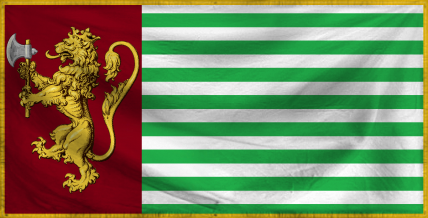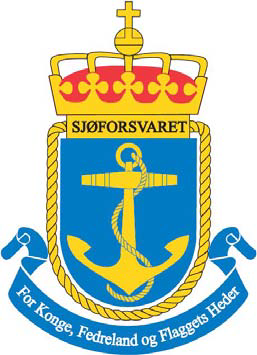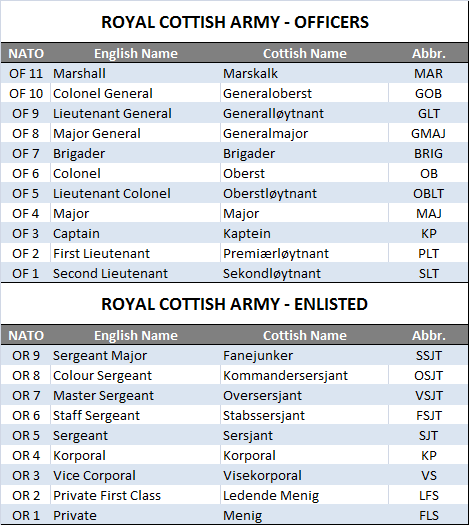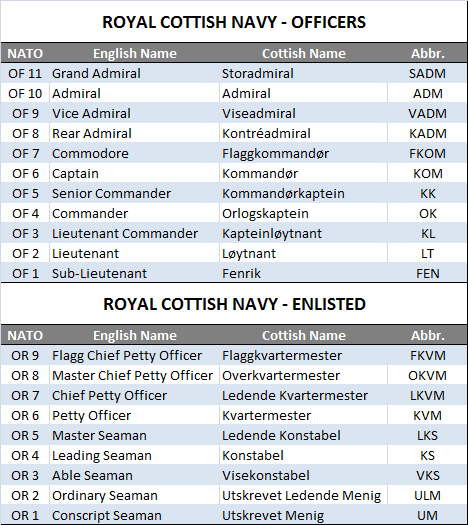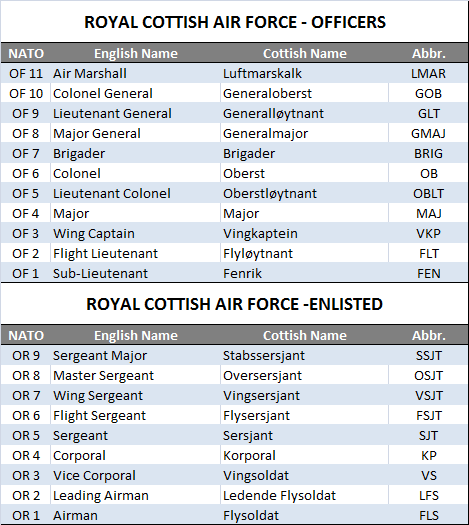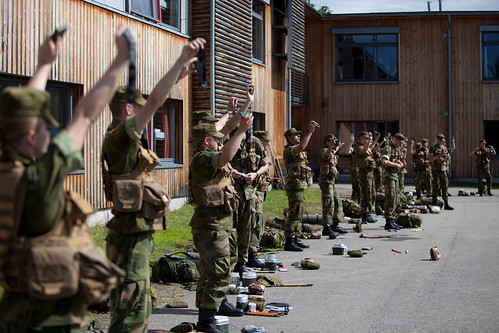
The Armed Forces of the Realm of Cotland is the organization responsible for the territorial defence of the Realm of Cotland and its interests. The Armed Forces are organized under the purview of the Ministry of Defence, which answers to the Cabinet and the Parliament.
The Armed Forces of the Realm of Cotland (AFRC for short) consist of three branches. These are the Royal Cottish Army (RCA), the Royal Cottish Navy (RCN), and the Royal Cottish Air Force (RCAF). Additionally, the AFRC includes the Armed Forces Logistics Organization (AFLO), the Intelligence Service (CIS) and the Special Operations Command (SOKDA), which are Joint Service Commands that contain personnel from all three branches and, in the case of AFLO and CIS, civilian employees.
Table of Contents
- Royal Cottish Army
- Royal Cottish Navy
- Royal Cottish Air Force
- Joint Special Operations Command
- Ranks of the Armed Forces of the Realm of Cotland
- Small-Arms of the Armed Forces of the Realm of Cotland
- Crew-Serviced Weapons of the Armed Forces of the Realm of Cotland
- Principal Equipment, Royal Cottish Army
- The Ten Laws of War

